







1 NEWS 3 COMMUNITY NEWS 4 OPINIONS 6 ENTERTAINMENT 11 FEATURES 14 SPORTS 16 LAST WORD Exploring the roots of conspiracy theories California bus system restricts access to education on page 8 on page 10 Vol. U No. 3 NON-PROFIT ORGANIZATION U.S. POSTAGE PAID PERMIT NO. 942 SAN JOSE, CA Leland High School 6677 Camden Avenue, San Jose, CA 95120 @lelandchargeraccount @thechargeraccount thechargeraccount.com on page 5 Thursday, December 15, 2022 Leland High School 6677 Camden Avenue, San Jose, CA 95120 The CHARGER ACCOUNT
BY SOPHIA QIN
DESIGN
QUINCY
HAN ART
KIM ART
Elon Musk “frees” Twitter
ELLIE
Leland Cultural Fair: Celebrating the school’s diversity
At local primary schools, cultural fairs are an annual, highly anticipated tradition. Taking feedback from students who enjoyed the event in their childhoods, the Associated Student Body (ASB) hosted the first ever Leland Cultural Fair on Nov. 17 during lunch. Upon leaving their fourth period classrooms, students found the quad lined with 11 booths representing different countries including Japan, the Philippines, Mexico, Turkey and Ukraine. At each booth, student representatives set up trifolds to highlight interesting facts about their cultural heritages and presented trays of snacks to share. The sweet aroma of food filled the air and the quad was packed with hundreds of students exploring booths, with music from different countries playing in the background.
At the Japan booth, students learned about the country’s unique customs and sampled popular Japanese snacks such as Pocky and Hi-Chews. The representatives of the booth, Senior Kaily Yoshioka-Meonske and Sophomore Bradley Yoshioka-
Meonske, presented a book about San Jose’s Japantown and koinobori—windsocks flown in Japan to celebrate Children’s Day. Large plates of puto and kutsinta, different types of steamed rice cake, covered the Philippines table.
“The atmosphere was high-spirited and everyone enjoyed touring the various booths. I sampled a lot of different foods and drinks and I loved the music, especially the Mexican song La Chona,” Freshman Avni Iyer said.

The Mexico booth stood out to many students. Through the trifold, they learned about different forms of Mexican dance and holidays such as the Day of the Dead. The
folklórico costumes. On the side, Senior Jasmine Garcia to upbeat Mexican music.
“I was performing folklórico dance, which originated from Jalisco, Mexico and represents the country’s beauty through colorful costumes. When dancing, every aspect of the outfit radiates happiness. The song I danced to, Jarabe Tapatío, or the Mexican Hat Dance, is well-known in Mexican culture,” Garcia said.

The event required extensive planning and collaboration between the students and ASB. Having never hosted a cultural fair before, ASB
drew inspiration from nearby elementary schools. For example, the trifolds at each stall were inspired by the booths at Graystone Elementary’s multicultural fair. However, unlike Graystone, ASB opted to hold the event during lunch so that more students had the opportunity to attend.
After working out all the logistics, ASB recruited students from various cultures to lead the booths by posting advertisements across campus and sharing information regarding the event on the school Instagram account.
Many enjoyed the event—especially the free food offered. Students appreciated the opportunity to celebrate their diverse heritages, expressing that the event fostered greater understanding.
“A cultural fair is extremely important in a school as diverse as ours. We live in a world where our differences can tear us apart, but the Leland Cultural Fair united our student community,” K. YoshiokaMeonske said.
ASB plans to turn the Leland Cultural Fair into a yearly tradition. They hope to expand interest, scale and representation by adding booths and organizing a multitude of performances, encouraging students to learn about other’s cultures.
“I loved seeing all the different cultures that constitute our diverse student body together in the quad. I enjoyed exploring the booths, delving deeper into foreign customs and trying new foods. The event highlighted the importance of celebrating our unique heritages and the formative role that traditions play in our lives.”
KAYLACHOIANDELLIEKIMART
“Cultural fairs
give

chance to not only share their heritage, but also learn about others. It was a fantastc idea
bring the event to high school and I am thrilled to hear that ASB will be establishing it as
2 DESIGN BY SOPHIA QIN
DECEMBER 15, 2022
—Junior Chloe Shih
What value does a cultural fair bring to the school community?
Gilina Voon
Staff Writer
are extremely valuable because they
students the
to
an annual tradition.”
—Senior Eric Koga
Upper Left: Senior Jasmine Garcia and Freshman Adrian Murillo pose in traditional Mexican clothing. Lower Right: Seniors Ariana Amato, Tina Dehsarvi and Ava Ghaffari-Kashani smile for a group photo.
“My favorite part of the Leland Cultural Fair was the food. I tried a variety of different drinks; I especially enjoyed the Turkish tea. I also learned about Six Soldier Mochi, a chewy candy that tastes like green tea and seaweed, at the Japan booth.”
Compiled by Bertina Fan, Lifestyle & Feature School Editor
SCHOOL NEWS
—Senior Kayla Longtin
HSI LOK CHAN PHOTO
Mahan’s moment: San Jose votes for change
Lia Yereslove
Staff Writer




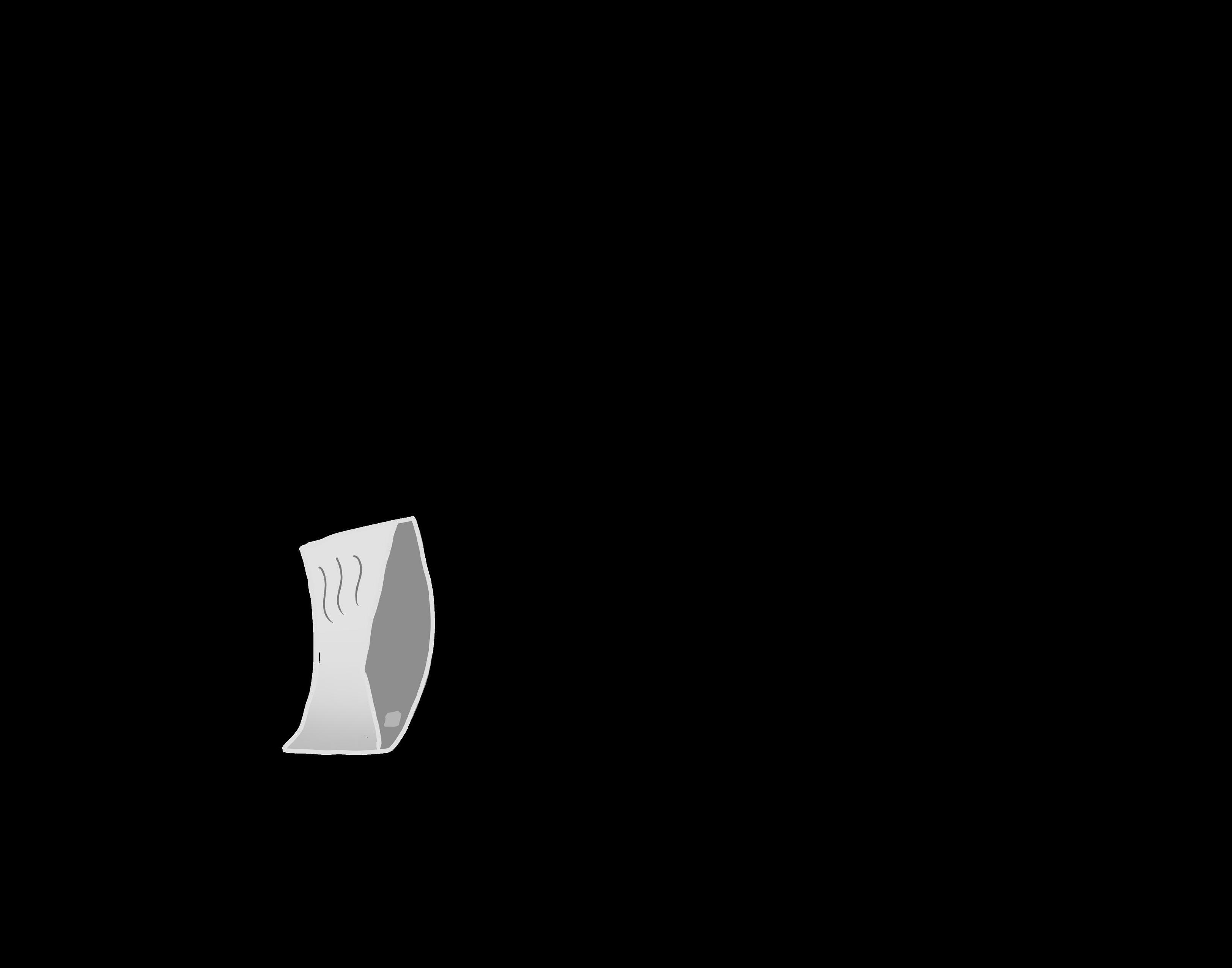



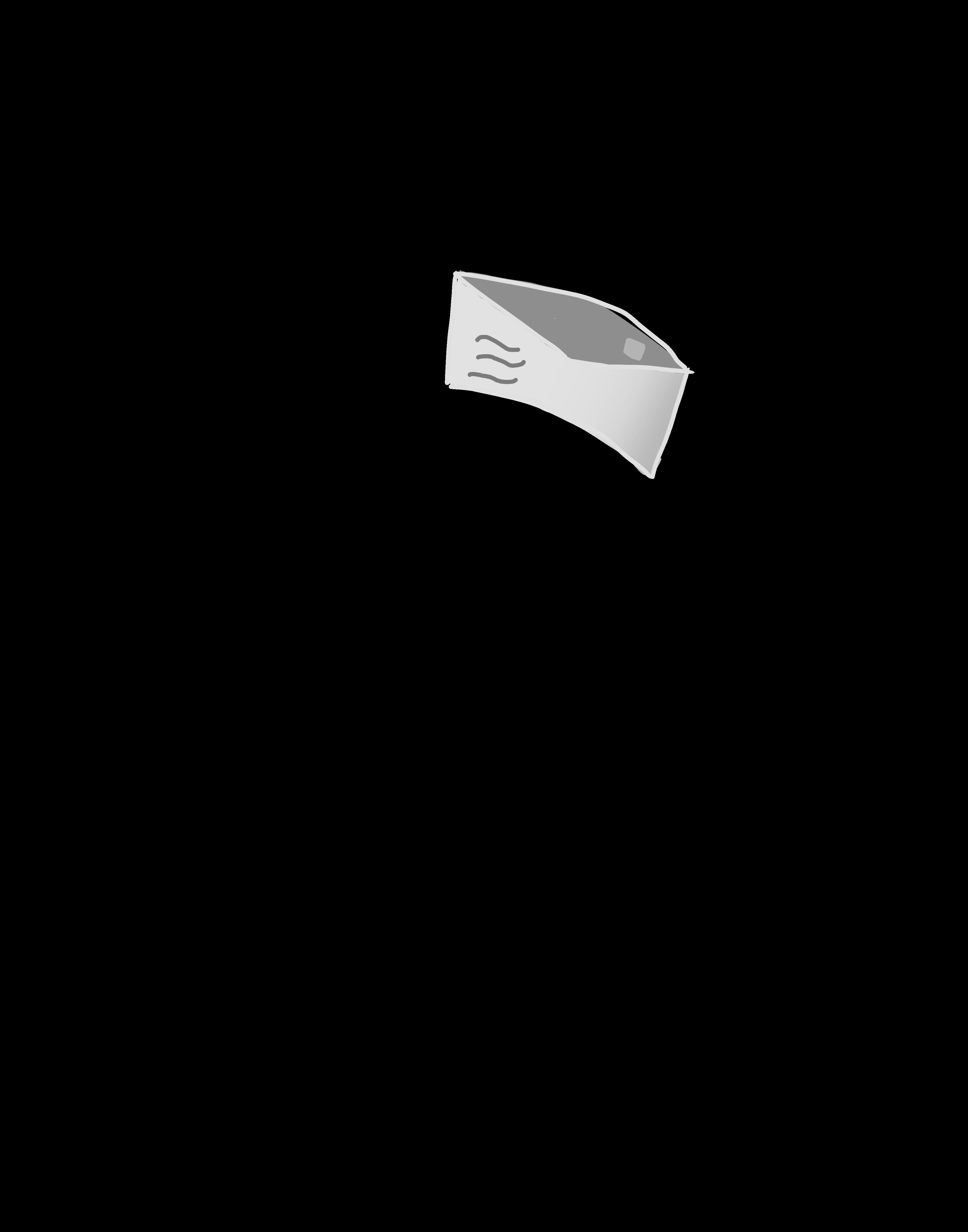
“After a week of vote counting, Chavez conceded and Mahan was declared San Jose’s mayor for the next two years.”

COMMUNITY NEWS 3 THE CHARGER ACCOUNT DESIGN BY IMRAN SHAIKH
Lisa Ahmad: Chef and restaurant owner
MANAGING EDITOR Manasa Sriraj ADVISOR Elaine Ngo
Gwen Carroll Andrew Duval
Antara Gangwal
Jay Li
ARTISTS
PHOTOGRAPHERS
Defacing art for the climate: A recipe for disaster

Two women crack open cans of tomato soup, wearing shirts labeled “JUST STOP OIL.” They throw the soup onto Vincent Van Gogh’s “Sunflowers” painting, eliciting shouts and gasps from museum visitors. They slather glue onto the wall and hands, pasting themselves next to the art as spectators call for security. Shaking, one of the women shouts, “What is worth more, art or life? Is it worth more than food, more than justice?”
This incident is one of many in which climate activists defaced famous paintings to raise awareness for their cause. For instance, activists glued their hands to the frame of Edvard Munch’s “The Scream.” Protesters in Germany threw mashed potatoes on Claude Monet’s “Haystacks” declaring “We are in a climate catastrophe and all you are afraid of is tomato soup or mashed potatoes on a painting.”
The vandalism has been met with predominantly negative responses. In the comments of the Global News YouTube video depicting the vandalization of “Sunflowers,” netizens claimed defacing the paintings only tarnished the movement’s reputation rather than bringing attention to climate change. Many also noted the hypocrisy of wasting food in an attempt to put food scarcity in the spotlight. While the activists had a noble intent, they damaged the painting’s valuable frame and would have severely damaged the painting itself if it were not for its protective case.
“The activists’ tactics were an effective way to gain attention, but it did not further the movement because most major news outlets focused on
the comedic value of hurling food at a painting rather than spreading awareness or enticing action from major oil companies,” Junior Lori
activists’ organization’s slogan “JUST STOP OIL”—which is far more impactful than vandalism.
“There is clearly urgency in the climate movement, and more measures should be taken to raise awareness as the climate crisis is not being addressed adequately. However, damaging valuable artwork is not a way to achieve this goal,” Freshman Shloka Chawla said.
Of individuals polled by Pew Research in 17 developed countries, 72% reported that they were concerned by climate change, so damaging valuable art is unnecessary to bring attention to this issue. In addition, the widespread disapproval of the activists’ actions online indicates that damaging art does little other than stoking hatred towards climate activists. However, the vandalizations should not interfere with support for climate change action: CNN states that studies found that the level of support for the vandalizing protestors’ actions does not correspond to the level of support for their goals.
civil disobedience for the purpose of activism would be to directly interfere with the operations of oil companies, forcing them to concede to climate activists’ demands in order to function. For example, activists could block the entrances of oil company facilities instead of blocking major highways as many activists in the U.K. have done recently. Hindering oil company operations fulfills the
Believing in Saint Nick
Letting Santa Claus come to town
known as the Feast of Saint Nicholas, is still celebrated in many Western European countries on Dec. 6, the day of his death.
Currently, many countries have pledged to reduce their emissions so that global temperatures would not rise more than 2.1 C by 2100. Scientists have stated that to avoid major impacts, warming must be kept under 2 C. To help achieve this goal, climate activists must spread word about the realities of climate change, but in a way that does not antagonize the rest of the population. As the climate crisis worsens and action becomes more urgent, it is imperative that people spread awareness of the issue in a truly impactful—not just dramatic—way, convincing lawmakers to take more action.
October-November issue corrections
Viewpoint: Quotebox: How does color affect you?
pieces will be published at the discretion of the editorial staff.
Readers can notify The Charger Account to any errors in print by emailing us at lelandchargeraccount@gmail.com. We will acknowledge our mistakes in our next issue. For advertising information and pricing, please check out our website at thechargeraccount.com/advertise-with-us.
The Charger Account is distributed to the Leland community free of cost.

As children, our parents taught us about Santa Claus, feeding us tales of the mystical man who brings presents on the night of Christmas Eve. He slides down the chimney to reward kids who are “nice,” incentivizing positive behavior and discouraging misbehavior. To many, Santa Claus symbolizes the magic of Christmas; he is the inspiration behind many holiday traditions, such as baking cookies to leave by the chimney. However, others believe that the practice is misleading, with some parents choosing to tell their children the truth about Santa.
The tale of Santa Claus dates back over a millennium to a monk named Saint Nicholas. History explains that Nicholas was born around 280 A.D. in present-day Turkey and became a legend for allegedly giving away his inherited wealth to travel the countryside and care for the poor and the sick.
Known as a protector of children and sailors, Nicholas became the most popular saint in Europe by the Renaissance. Saint Nicholas Day, also
For the rest of the world, Santa Claus visits on Dec. 25—Christmas Day, celebrating the birth of Christ. Pennsylvanian newspaper The Daily Item explains that in the eyes of many Christians, teaching children that Santa Claus exists cultivates a negative precedent that contradicts the foundational Christian value of honesty. Moreover, when children eventually discover the truth that Santa does not exist, they may question their parents’ authority and God’s existence. These parents believe that Christmas should be focused on celebrating the birth of Jesus Christ, not the myth of Santa Claus or the presents.
Despite its religious origins, Christmas has gradually transformed into a secular holiday celebrated across the world. It is no longer strictly for commemorating the birth of Christ, but also a day for people to spend extra time with their loved ones, exchanging gifts and taking part in activities like listening to Christmas music or watching holiday romcoms that have become distinctive to “holiday culture.”
We believe in the power of Santa—each of us has had our own unique experiences with the jolly man in the red suit. Although it was
• Addisen Heaton’s name is misspelled as “Addison Heaton.”

Feature World: Unlawful death sparks revolution in Iran:
• Ava Ghaffari-Kashani’s name is incorrectly written as “Ava Ghaffari.”
undeniably disappointing to learn the truth, the memories we made, the magical stories we dreamed about Santa and the Christmas spirit we experienced will last a lifetime. While we respect those who choose to tell their children the truth, we understand the reasons behind our parents’ secrecy and feel that believing in Santa plays a formative and integral role during childhood and holiday festivities.
Staff Writer
Andrew Duval
DIRECTORS
Leland High School 6677 Camden Ave. Principal Peter Park San Jose Unified School District San Jose, CA 95120-2142 (408) 535-6290 thechargeraccount.com EDITORS IN CHIEF Keirah Chen, Raymond Dai Miranda Lu Larry Ye ART AND PHOTO
Ellie Kim, Julia Nakanishi NEWS EDITORS
Imran Shaikh OPINIONS EDITOR
Li SCIENCE & TECH EDITOR
Qin FEATURE EDITORS Bertina Fan, Inseo Kim, Imran Shaikh VIEWPOINT AND LAST WORD EDITORS Isaac Ang, Daniel Lin ENTERTAINMENT AND LIFESTYLE EDITORS
Fan, Reagan Liu
REPORT EDITOR
Ang SPORTS EDITOR
Lu STUDENT SPOTLIGHT EDITOR
Liu AD MANAGER
Lu MEDIA MANAGER
Claire
Kailey Hu,
Sophia Qin,
Suvia
Sophia
Bertina
INVESTIGATIVE
Isaac
Breanna
Reagan
Breanna
Jeehee Kim,
Pham
COMMUNITY CIRCULATION Parent Club and Leland Bridge
STAFF WRITERS
in the community is to inform, educate and investigate the events occurring within Leland’s community and beyond.
and opinions expressed in our articles represent
of
Account staff but do not represent the views and beliefs of any particular staff member.
submissions and
MEDIA TEAM Diya Boyapati Our mission
The ideas
over half
The Charger
The Charger Account invites submissions of signed letters of opinion. We reserve the right to edit
The Charger Account Dec. 15 | Vol. U No. 3
Tammy Newman
Ella Polak Gilina Voon Kyan Wang Lauren Wilson Lia Yereslove
Daniel Choi
Kayla Choi
Quincy Han
Jane Hong Harry Kang
Lyn Kang Dana Lim Jude Tantawy Kenneth Yang
Hsi Lok Chan William Huang
Gilina Voon
The Charger
aCCounT
FEATURE: WORLD
The Charger Account Editorial Staff
DECEMBER 15, 2022 4 OPINIONS
DESIGN BY SUVIA LI
KAILEY HU ART
The Charger Account wishes everyone a safe and happy holiday season!
Elon Musk “frees” Twitter






“Pure Colour”
Ye’s string of anti-Semitic and pro-Nazi comments are facing intense backlash, bringing attention to his celebrity influence as a whole. From dropped brand deals to directly influencing anti-Semitic activity, Ye’s actions have had significant repercussions, making it clear that celebrities like Ye must use their power responsibly.
with Fox News, Ye theorized that Jared Kushner, former senior advisor to President Donald Trump, arranged peace agreements between Arab nations and Israel “to make money,” perpetuating the anti-Semetic stereotype of Jewish people being greedy. In response to rapper Sean “Diddy” Combs’s condemnation of his statements Ye suggested on Instagram that Combs was being controlled by Jewish people. Ye’s increasingly problematic behavior was highlighted by a tweet threatening to go “death con three on Jewish people,” referencing the term U.S. military term DEFCON: Defense readiness condition.
The consequences were immediate. Twitter deleted the tweet and Ye was suspended. However, when Elon Musk bought Twitter, Ye’s account was
according to Forbes— costing Ye his billionaire status. Adidas also ended Ye’s Yeezy sneaker line, which had generated 10% of the
“Companies do not want to be associated with controversial figures such as Ye to preserve their reputation, as customers may perceive a brand deal as an endorsement. Because many celebrities gain significant attention and revenue through promotions, companies cutting ties both removes their spotlight and forces them to reconsider their
Instead of apologizing, Ye doubled during an episode of the “Drink Champs” podcast, ranting about how Jewish people control the media and “have owned the Black voice.” He defended himself by claiming that he cannot be anti-Semitic because Black people are also Jewish. Most recently, in an interview by alt-right conspiracy theorist Alex Jones, the rapper stated
projected in a stadium during a football game between the University of Florida and the University of Georgia. After inviting Ye to a private tour, The Holocaust Museum in LA was flooded with threatening antiSemitic messages.
“While Ye suffers from bipolar disorder, it is not an excuse to spread hate speech. He has access to medication and should take it. However, if Ye insists to stay off his medication, he should avoid social media altogether because his massive popularity means that anything he says will be heard by hundreds of millions of fans,” Taro Bergan said. Ye is pouring gasoline into the wildfire of antiSemitism. Ye’s continuous remarks have created a ripple, providing bigots a basis to push their agendas.

The right wing claims that Twitter is censoring Ye; however, there is a clear distinction between censorship and stopping hate speech. When influential figures such as Ye use their platforms to spread prejudice, they must have their access to these platforms taken away.
Antara Gangwal Staff Writer

The enchanting cover enthralled me to pick up this novel: Its specific shade of green— the “pure color”—paired with a beige backdrop and a subtle golden embossing on the title was simple yet captivating. Unfortunately, it was one of the book’s only enticing parts. In its premise, “Pure Colour” promises “a galaxy of a novel,” but it is less expansive than a single
The novel opens with a metaphor that forms the narrative’s backbone, establishing that humans view the world from the perspective of a bird, who views life from a high vantage point, a bear, who loyally loves a single person, or a fish, who finds joy in helping others.

Mira, the protagonist, is a bird—a woman who finds beauty in everything yet struggles to understand love. Annie, the woman she falls in love with, is a fish—an orphan who devotes her life to helping those in need. Mira’s father is a bear, holding his daughter the closest in his life.
When Mira’s father passes away, Mira is grief-stricken. Yet, she feels his spirit enter hers, beginning a journey of selfdiscovery encompassing growth, love and pain.
The novel is eccentric; the plot is driven by Mira’s internal monologue, creating a writing style that is difficult to read because of its rambling nature. Every other paragraph offers insight on a theme, with the central tenet that a second, stronger draft of human existence will replace the current one. However, the topics seem hastily scrapbooked together, with commentary that comes across as pretentious rather than profound.


This storytelling style also led me to feel no connection to Mira, her father or Annie. They seem like plot devices rather than humans.
“Pure Colour” is abstract, especially in its structure—one that offers a single paragraph in one chapter and a meandering monologue the next. Expecting a structured novel, I was let down.
“Pure Colour” is the opposite of pure; cloudy and confusing, the novel lacks purpose. Only in the last pages does it begin to achieve the depth it attempts to have—but by then, it is too late. “Pure Colour” fails to touch the reader, cementing the idea that it is misleading to judge a book by its cover.
Staff Writer Jay Li
THE CHARGER ACCOUNT DESIGN BY SUVIA LI
Pure Color (2/5) + interesting themes - confusing writing - lacks purpose and clarity worth the read?
OPINIONS 5
HARRY KANG ART
INSEO KIM ART
“The Menu”
“Don’t Worry Darling:” Any publicity is good publicity
Lia Yereslove
Staff Writer
Daniel Lin Viewpoint Editor

When I first agreed to watch “The Menu,” a horror comedy film, with my dear friend Imran Shaikh, I was skeptical of whether I would enjoy it as horror is not my favorite genre. However, I was pleasantly surprised, as the film focused more on comedy, with the only real horror element of the movie being its graphic imagery.
“The Menu” covers the events of a night at an exclusive restaurant on a remote island, where an acclaimed chef— played by Ralph Fiennes—has prepared an extravagant menu for 12 guests, each of whom paid the steep price of $1,250 to dine there. Even from the beginning, the atmosphere of the restaurant seems abnormal—the island has an eerie mood and the courses are odd. For example, one of the courses features laser-inscribed tortillas that depict images of each diner’s darkest secrets. As the night progresses, the courses become even more uncanny, and the diners struggle to escape.
Although the premise of the story is simple, the plot is complex—the underlying theme is carefully woven in and only fully reveals itself in an exhilarating finish. The pacing is perfect as well; I never felt as if the suspense was held out for too long, nor did I ever feel confused by a rushed plot. Moreover, even the less action-packed beginning of the movie was not boring, as it was used to provide a glimpse into the life of each diner.
One major highlight of the movie was the showcase of each course and its ingredients, which starts as a unique way to organize the plot but soon turns into an amusing commentary— it juxtaposes the calm, culinary environment and the horrific situation of the restaurant.
My only complaint with “The Menu” is its overemphasis on the message that wealth corrupts people, an idea prevalent in nearly all movies about the super rich. This theme could already be inferred from the context and did not need to be stressed so heavily.
However, this issue is minor compared to all of the things “The Menu” does well. The production is astounding, and the film’s subtleties and nuances show a clear dedication to making it unforgettable. Stunning, witty and occasionally grotesque, “The Menu” is an amazing movie that I would absolutely recommend watching.
Rumors of arguments between cast members, lies regarding casting and absences from both lead actor Harry Styles and director Olivia Wilde spread like wildfire throughout news outlets, stirring up controversy and significant media attention towards the recent film “Don’t Worry Darling.” Cast members were frustrated with Wilde for neglecting her duties, and several actors left the set after disputes with colleagues.
The strain on Wilde’s relationship with the entire cast of “Don’t Worry Darling” began when the male lead at the time, Shia LaBeouf, left the film for reasons unknown by all except the director. LaBeouf released a video of Wilde attempting to convince him to return to the film—without Wilde’s initial consent. In the video, Wilde claims that lead actress Florence Pugh would be more cooperative when working with LaBeouf. This situation revealed itself to be highly confusing to audiences: Although Wilde is seen attempting to convince LaBeouf to stay in the video, she then released a statement contradicting what the video had shown earlier.
“We had to replace Shia. He is a fantastic actor, but it was not going to work. When he gave me the ultimatum of him or Florence, I chose Florence,” Wilde said, referring to LaBeouf’s departure while speaking on The Late Show.
It was suspected by “Don’t Worry Darling” fans that LaBeouf and Pugh had not been getting along on set, which was confirmed by Wilde during her interview on The Late Show. Other sources speculated Pugh refused to work with LaBeouf
Tammy Newman
due to his sexual assault allegations, which further explains LaBeouf’s motivation to hand Wilde the ultimatum.
Due to LaBeouf’s untimely exit, the movie needed a new male lead, and Wilde recruited Grammywinning pop star Harry Styles to co-star alongside Pugh. Soon after production restarted, a relationship formed between Wilde and Styles. This only amplified the backlash against “Don’t Worry Darling,” with people criticizing the couple because they dated throughout the film’s production.
With Styles joining the A-list actors on the set, the film continued to gain attention in media, especially with photos of the new couple appearing in numerous tabloids.
According to Vanity Fair, Wilde was suspected of neglecting her duties as a director and focusing mainly on her relationship with Styles, increasing skepticism about Wilde’s quality of directing. In Elle Magazine, Wilde claimed that the hate she received regarding her directing skills was due to the misogyny in Hollywood.
“Workplace relationships are generally frowned upon, but usually, when the man is in power, the situation is less controversial. While I do not agree with Wilde’s decision to begin a relationship with an actor during production, if the roles were reversed and Harry Styles was directing, the media coverage would have been vastly different,” Sophomore Teddy Tak said.
publicity, even negative, can improve a film’s exposure. The controversies and drama circling in the media intrigued many people, including myself. Despite the bad reviews, my friends and I were still interested in seeing it,” Senior Lana Stoicich said.





However, the film was only considered a success in the U.S. “Don’t Worry Darling” grossed just about $3 million outside of the country as the drama surrounding the movie was not highly covered elsewhere. This incident highlights that both positive and negative exposure can unintentionally promote a film, regardless of critical reception.
Pushed out of the closet

“Heartstopper,” currently one of the most popular romance television shows on Netflix, spurred a tremendous amount of controversy around its casting of actor Kit Connor as a bisexual character. Adapted from a graphic novel series, the show was released on April 22 and became one of the most popular shows on Netflix. According to The Daily Pennsylvanian, fans spent over 53 million hours watching the series within the first three weeks of its release, making it a part of the Top 10 TV shows category on Netflix in 54 countries. In the series, Connor plays Nick Nelson, a young boy navigating through life while realizing and exploring his sexuality after falling in love with another boy. Shortly after the show was released, however, Connor was accused of queerbaiting.
The outrage began when Connor was caught on video holding hands with Argentine-American actress Maia Reficco while on a date in Paris. In response, many fans expressed distress on several social media platforms including TikTok. Some viewers had assumed that Connor was part of the LGBTQ+ community due to his role on the show. Fans’
anger stemmed from the feeling that Connor was unfit to represent a gay character, as he was not openly gay himself. Health magazine explains that queerbaiting draws viewers in with the hope of gay representation. Such shows frequently create chemistry between two same-sex characters while also maintaining ambiguity about their sexuality, keeping audiences on edge by eluding that something may happen between them, but then ending the show with no confirmed queer relationship.
“Accusing Kit Connor of queerbaiting is not only unfair but also just false. The true definition of queerbaiting is companies teasing possible gay relationships between characters as a marketing tactic. Kit Connor portraying an actual bisexual character in no way matches this,” Senior Sharma said.
On Oct. 31, as reported by USA Today, Connor publicly tweeted, “I’m bi. Congrats for forcing an 18year-old to out himself”. Criticism that fans levied towards Connor was proven false—he simply chose to keep his sexuality private.
Staff Writer

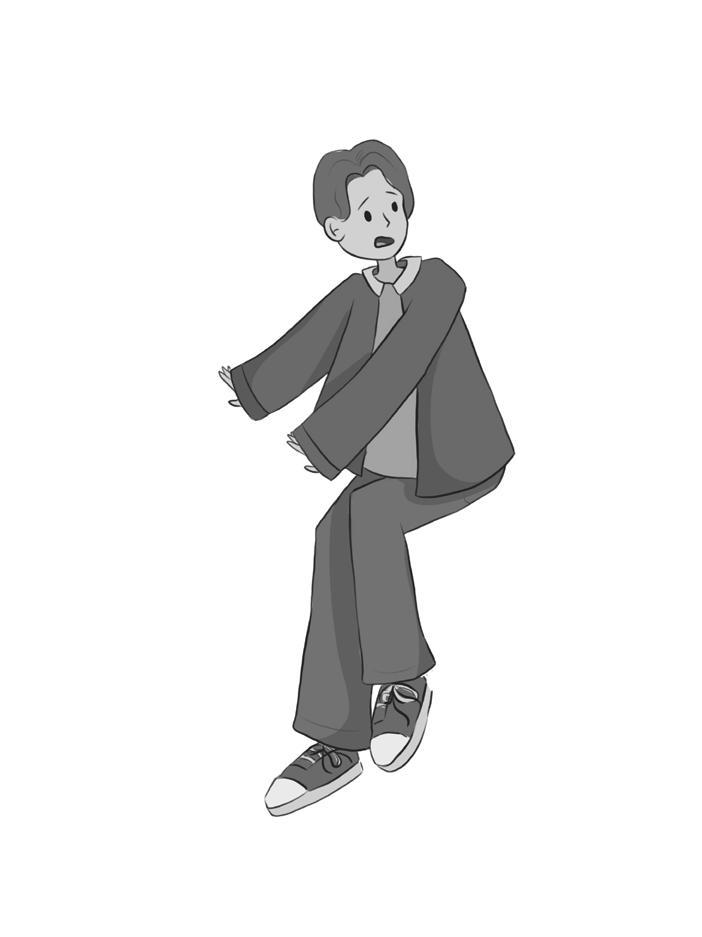
There are other celebrities who have also been accused of queerbaiting in the past, per The Grazia Daily. For example, Billie Eilish was attacked online for posting music videos with suggestive dance movements toward other women, and Harry Styles was accused of queerbaiting by refusing to identify his sexuality. The Grazia Daily writes that such accusations are unfair to celebrities because fans should not criticize their private life matters. Furthermore, according to Mashable, due to the fluid nature of sexuality, individuals can recognize changes in their sexuality later in life—something that is uncontrollable.
“While queerbaiting sets back progress made towards LGBTQ+ representation, fans must remember that celebrities have a right to their privacy regarding their personal life,” Vijay Tirumalai said.
Diverse representation has become increasingly important to many fans. New America Journal reported how representation is necessary for equality and inclusion, but the Kit Connor incident demonstrates how hostile fans can become when they misunderstand actors. Many others believe that quickly accusing others of baiting can end up doing more harm than good for LGBTQ+ representation.
ENTERTAINMENT DECEMBER 15, 2022 6
“The Menu” (5/5) + perfect amount of suspense + witty and entertaining - cliche theme how movie-ing was it? DESIGN BY REAGAN LIU
ELLIE KIM ART
By connecting people who need to commute with nearby drivers, Uber has long been a company that prioritizes user convenience. But with the launch of its Journey Ads campaign, the company will begin displaying advertisements in cars and within its apps, generating revenue by taking advantage of their consumer database. However, in the pursuit of profit, Uber may run the risk of compromising user experience and privacy.
According to The Washington Post, since Uber’s inception in 2009, the company has amassed a wealth of customer data—including eating preferences, travel destinations and past fares paid by riders, enabling it to share targeted promotions.
To maximize brand exposure, Uber’s Journey Ads will allow companies to sponsor an entire trip. The rider will be shown commercials throughout their journey—starting from when they open the app to when they step off the vehicle, per technology magazine Gizmodo. Promotional material will be embedded in menus on the UberEats app and displayed on cartops and in-car tablets attached to the back of seats.



However, many are worried that commercials will detract from passenger experience. In addition, ride fees have risen by 45% in the past three years, Bloomberg states, prompting consumers to inquire whether Uber will reward customers
with lower fares for watching advertisements. The degradation of user experience and expensive fees may drive consumers to choose other ride-hailing companies.
“Advertisements can distract me if I want to relax during the ride. The user experience is just as important as the transportation service; Uber is obliged to lower its fares to compensate,” Senior Atharv Bhavanasi said.
Despite operating on a global scale, Uber has struggled to turn a profit. Online publication Slate Magazine reports that since the company went public in 2019, it has lost $30 billion, largely due to a lack of travel during the pandemic. The Journey Ads campaign is a possible long-term solution to this; the company predicts the program will generate $1 billion in revenue by 2024. It also claims that this revenue can help raise drivers’ pay, which may in turn lower prices for riders, per The Washington Post.
“Uber’s desire to make a profit off its customers is understandable and an interest in maintaining a positive image will likely prevent it from abusing its capacity to advertise. However, Uber should not sell customer data to other companies,” Senior Abhishek Kaushikkar
As Uber uses first-party data to tailor advertisements to riders’ interests, many travelers have expressed concerns about a possible breach of personal data. A 2016 study by the National Bureau of Economic Research reveals that Uber has collected enough data that its surge pricing algorithm can pinpoint individuals’ willingness to pay ride fares with precise accuracy. Past incidents substantiate that its data is not secure; The New York Times reports that in September, an 18-yearold successfully hacked into Uber’s internal network after texting an employee for login credentials.
Other companies have also transitioned into advertising networks. For example, Netflix, facing competition with Disney+, introduced its Basic With Ads plan as an additional source of revenue last month. In August, Uber’s competitor Lyft launched Lyft Media, a media division that aims to entertain riders through engaging commercials displayed on car tablets.
Uber’s new marketing plan has garnered mixed responses; it may eventually lower costs for riders, but existing public concern over high prices, breaches of consumer privacy and the potentially disruptive nature of advertisements could erode the
Ox 9 Lanzhou Hand Pulled Noodles





Celebrity image has been commodified for decades, but the explosive success of Rihanna’s beauty brand Fenty in 2018 sparked a new era of celebrity beauty branding. Numerous A-list stars moved beyond endorsements and partnerships to start their own companies—often with no experience. In the past five years, these lines have flooded the beauty space in a continual stream of launches, from Millie Bobby Brown’s florence by mills in 2019 to Hailey Bieber’s Rhode in June of this year.
The expansion and efficacy of celebrity branding stems from a variety of factors. The beauty industry is lucrative with high profit margins, incentivizing celebrities to capitalize on their massive fanbases. Moreover, authenticity is salient in marketing and is the primary influence behind purchasing decisions, psychologist Pamela Rutledge states. Fashion and culture YouTuber Mina Le elaborates, explaining that consumers are more likely to trust individuals— namely, their favorite celebrities— over corporations, despite these individuals being tied to companies themselves.

“Often, the fame and reputation of a celebrity is the sole asset they offer. It gives them an invaluable head start when starting a beauty brand, even if they lack industry expertise,” Senior Jeffrey Zheng said.
Across social media,

fashion industry veterans have expressed increasing disillusionment with celebrity beauty lines; makeup artist Kevin James Bennett referred to them as “cash-grabs.”
Following news of the imminent launch of his skincare brand Le Domaine in October, five Londonbased beauty brand founders issued an “open letter to Brad Pitt,” asserting that celebrities with zero experience in the industry are dominating the market space, taking focus away from beauty line founders who have been researching and innovating for years to build better products and platforms. They implored him to invest in existing brands that are already working towards more sustainable and inclusive solutions instead, offering an alternative route for celebrities who are genuinely interested in making a positive impact on the beauty business.
A growing base of young consumers is also rejecting celebrityendorsed products. According to The New York Times, research firm Gen Z Planet found that 19% of Gen Zers cited celebrity promotions as a factor behind their purchasing decisions, while 66% reported that friends were the predominant influence. Social media has fostered
greater awareness; many customers now recognize that celebrities undergo costly surgical and cosmetic procedures, giving them flawless complexions that cannot be achieved merely through skincare and makeup products. Additionally, several celebrity brands have proved unsuccessful; for example, Vanessa Hudgens’s and Madison Beer’s Know Beauty became inactive following its grand debut in June.
“By making false claims about manufacturing practices and placing minimum effort into their companies, celebrities perpetuate a cycle of malpractice and irresponsibility,” Sophomore Caleb Park said.


There are a few outliers. According to Vogue Business, Pharrell Williams’s company Humanrace formulates its products in collaboration with Dr. Elena Jones—Williams’s long-time dermatologist. Additionally, Rihanna’s Fenty became immensely successful after introducing 40 shades of foundation in its 2018 launch, setting a precedent by proving that profitability could go hand in hand with inclusivity.
Despite continued proliferation of celebrity beauty brands, more vocal protests by experts and conscious consumers and recent celebrity beauty brand failures may signal an impending paradigm shift within the beauty industry.

Founded in 2017, Ox 9 Lanzhou Hand Pulled Noodles has garnered a reputation for its authentic Chinese noodles and traditional dishes. The restaurant serves dry and soup noodle bowls, with six different options for noodle thickness and shape. I ordered Spicy Ground Pork Dry Noodles with large flat noodles and sides of basil popcorn chicken and garlic cucumber. Due to the small number of tables, I had to wait 20 minutes to be seated.
After sitting down, I placed my order through a QR code. The dining area was loud with lunchtime chatter and servers bustled in and out of the kitchen, delivering food promptly. All my dishes arrived just two to three minutes after I ordered them.
First, I dove into the garlic cucumbers; they were perfectly fresh with a delightful crunch, and the vinegar-garlic sauce gave them a pleasant burst of acidity. I tried the popcorn chicken next, dipping it in chili oil and savoring its crispy crust and juicy meat.
After sampling the sides, I focused on the noodle bowl. The dish was simple—it had ground pork, three pieces of bok choy and a sizeable portion of flat noodles. I was a bit put off by the bok choy; its temperature was uneven from lying on top of the hot noodles. It was also watery, but it did not disturb the dish’s cohesion.
The noodles became sticky from sitting for a few minutes, so I loosened them by mixing in the ground pork. Trying them together, I was immediately hit with the spice of Sichuan pepper, which numbed my tongue. The spice level varied—it moved in waves, initially setting my tongue on fire, lessening as I got accustomed to it and eventually compounding as I kept eating. The pork was fairly sweet, acting as a garnish to complement the noodles.
The dish’s strength lies in its simplicity. The noodles exceeded my expectations, and the acidic cucumbers tied the meal together. The wait time for a table during rush hour was unfavorable, but could likely be avoided; at 2:00 p.m., when I left, the restaurant was nearly empty. Despite its limited space, Ox 9 Lanzhou Hand Pulled Noodles is definitely my new go-to restaurant for noodles and Chinese dishes.
Ella Polak
Staff Writer
celebrity
The downfall of
beauty brands
Entertainment & Student Spotlight Editor
Ox 9 Lanzhou Noodles (5/5) + fast service + offers vegetarian options - no tables for large groups deal or noo-dle? LIFESTYLE 7 THE CHARGER ACCOUNT
A to B: Uber steers
Investigative Report & Last Word Editor Isaac Ang DESIGN BY BERTINA FAN LYN KANG ART
Reagan Liu
From
into advertising
DANIEL
CHOI ART
DESIGN BY DANIEL LIN
Exploring the roots of conspiracy theories
Bertina Fan and Lauren Wilson
Lifestyle & Feature School Editor and Staff Writer
The car crash that resulted in Princess Diana’s death on Aug. 31, 1997 shocked the world, with the circumstances surrounding the incident causing people to question whether it was truly an accident. A popular belief was that the royal family hired British intelligence agencies to assassinate the princess. Although the event occurred 25 years ago, people are still intrigued by it and continue to doubt the reported details of her passing.
Such theories are known as conspiracy theories—suggestions made on the possibility of an unrevealed plot planned by powerful conspirators. One of the earliest known conspiracy theories was formed during the Great Fire of Rome, when a large fire razed the Circus Maximus stadium and burned a total of 14 Roman districts. According to National Geographic, rumors spread that Emperor Nero burned down the city to rebuild it according to his own plans.
Other historical examples of conspiracy theories include witch hunts and genocides. However, as reported by the Oxford University Press, it was not until the 1930s that the first psychological studies of conspiracy theories were conducted. By the 1950s, conspiracy theories were influencing public opinion and receiving more attention in the media.
“The majority of conspiracy theories are made for entertainment and rarely have substantial evidence to support them. People overanalyze events, causing them to make baseless claims. One conspiracy theory I know of is the belief that Earth is flat, which is a blatant lie that has been debunked by science,” Sophomore Mei Lau said.
According to Louisiana State University, conspiracy theories typically stem from a lack of official information and motivated reasoning— made up of confirmation, disconfirmation and attitude-congruence bias thought processes. These biases influence individuals to use data to confirm previous beliefs, discredit counterarguments and view evidence supporting their beliefs in a superior light than other data. Conspiracy theories also offer seemingly sensical explanations for complex phenomena, helping people relieve stress and cope with crises.

Events that are most likely to generate conspiracy theories are political, historical or cultural, according to Karen Douglas, a social psychologist at the University of Kentucky. Several conspiracy theories are developed based on the idea that a group in power is plotting in secret. For example, the lack of official information during the COVID-19 pandemic resulted in the circulation of several conspiracy theories—including one about how the virus was created by the government, social science journal SAGE Open states.
“Conspiracy theories are interesting as they allow us to understand what other people think of different topics. They let individuals see the various, unique thought processes of others. It does get annoying when people begin to repeat a joke conspiracy, but most are not too harmful,” Junior Ariya Acharya said.
Naturally, curiosity can lead people to question themselves and begin analyzing concepts they have not fully grasped. Conspiracy theories are an adaptation of this curiosity that delve into more indirect explanations for the specific details of an event. While many of these ideas may lack evidential support, some offer interesting propositions that could be further investigated in the future.
JANE HONG ART
Gwen Carroll
Staff Writer
Tear gas clouds the air as police officers form a barricade, struggling to ward off a crazed mob forcing their way into the Capitol Building. Not far away, a gallows is erected, the noose hanging ominously as thousands of rioters chant, “Hang Mike Pence!” over the din of the chaos. Across the nation, onlookers watch in horror as the Capitol Building is broken into and vandalized.
The infamous date was Jan. 6, 2021, when a mob of Donald Trump supporters flooded the building, willing to risk life and limb to prevent Congress from officializing Joe Biden’s victory in the presidential election. The Jan. 6 insurrection claimed the lives of five victims, four of whom were among the seditious mob, and injured countless more. The individuals were united by the same belief—that Democrats had stolen votes that rightfully belonged to Trump. Beliefs such as this that challenge what is widely considered fact are known as conspiracy theories. As the corpses pile higher because of these theories, one begins to wonder why some people are drawn to what is often considered baseless conjecture with no evidence.
According to Jan-Willem van Prooijen, social psychology professor at Vrije Universiteit Amsterdam, believing in conspiracy theories provides a sense of meaning and purpose to those who feel lost or unimportant. They can also be a form of instant gratification, with some believers giving up lifelong happiness—and sometimes even life itself—for validation and a rush of excitement.
“Conspiracy theories present an intriguing perspective that science does not offer. Some people believe in conspiracies such as UFOs and aliens for fun. They provide a break from the mundaneness of day-to-day life,” Sophomore Aditi Chowdhary said.

However, in his paper “Psychological benefits of believing conspiracy theories,” van Prooijen claims that since conspiracy theories rely on undermining an established authority, they sow distrust in their believers, leading victims to separate themselves from the rest of society. The resulting social ostracization makes the conspiracists more dependent on the theory and fellow believers, leading to a cycle that feeds upon itself—not unlike a drug addiction—with the difficulties of life buried rather than resolved at their root.
Conspiracy theories are notoriously difficult to disprove. Instead, as Aleksandra Cichocka, co-author of “Routledge Handbook of Conspiracy Theories,” found, the best defense is a good offense; that is, it is more effective to nip new theories in the bud than to try to debunk existing ones. Cichocka calls this prebunking—making sure people do not fall for misinformation by alerting them of it beforehand, similar to a vaccination. She added that online games such as “Bad News” and “Go Viral!” can help people learn to be wary of misinformation, especially on the internet where it runs rampant.
“Many conspiracies originate from the internet, where fake news spreads extremely easily. The internet has a large impact on people’s viewpoints because people who see false information can be easily misled,” Freshman Ingrid Magyari-Kope said. Indeed, the 2021 study “Conspiracy Theories and Their Societal Effects During the COVID-19 Pandemic” found that just being exposed to these conspiracies can make people more susceptible to believing in them. With misinformation in every crevice, it is more vital than ever to stay aware of the information one consumes.

Conspiracies: Medicinal and toxic
inconspiracy theories? Poll: Doyou believe Yes 47% No 53%
100 students polled
Compiled by Lauren Wilson and Lia Yereslove Staff Writers
Drivers in demand: SJUSD struggles with bus driver shortage
Andrew Duval
Freshman Phoenix Lugo takes the school bus to school every day, waking up at 6:30 a.m. each morning to catch the ride. The drive to school— normally about 15 minutes— now takes over half an hour, much longer than it should because of the bus driver shortage that has crippled San Jos Unified School District (SJUSD) and other districts in the Bay Area.
“I have been taking the bus since middle school. It has become tiring for me due to the constant delays and uncomfortable seating. I would recommend the district to decrease the number of stops and buy more comfortable seats to encourage more students to ride the bus,” Lugo said.

Currently, 86% of districts in Santa Clara County have open bus driver positions, while 79% report lower applicant numbers compared to last year. Although the service is still running, the drivers are stretched thin. Their routes are constantly changed to fill in for missing bus drivers with little warning, as stated by San José Spotlight. Due to the lack
of drivers, current SJUSD bus drivers must take on a heavy workload to fill in for the missing drivers, which has led to the elimination of several routes. The shortage has also resulted in some routes being extended— forcing students to wake up earlier,
A variety of factors have influenced the driver shortage. During the pandemic, the transition to distance learning meant that there was next to no demand for buses, prompting many schools to decrease funding for transportation services.

SJUSD is working to combat the shortage by raising the hourly starting pay of bus drivers to between $18 and $24 and providing medical benefits to further appeal to them. To curb the effects of the driver shortage, SJUSD has provided VTA passes to students
As stated by San Jos special needs students could be disproportionately affected by these cuts, as many of them prefer to see the same driver every morning as they head to school. The changes may also have a greater impact on students from low-income families, who may not have the luxury to afford alternative methods of transportation.
California bus system restricts access to education
Kyan Wang




August heralds a return to school across the U.S., with masses of students traveling to and from classrooms in iconic yellow buses. But in California, this flock of buses is seldom seen, and students and parents are left scrambling for alternative ways to reach school.
Despite possessing the largest economy in the U.S., California ranks last in the nation for school bus access. In 1981, the state’s government froze funds for school transportation. To this day, the government does not require school districts to provide transportation for students regardless of their distance from school, resulting in the lowest school transportation usage in the nation. According to the Federal Highway Administration, less than 9% of California students take the bus compared to the nationwide average of 55%.
contributing to the transportation problem. Some school districts are trying to fill vacant, low paying bus driver jobs by offering monetary incentives of sign-on bonuses. At San Diego Unified School District, advertisements for school bus driver jobs cover district vans in a desperate plea to fill 50 empty positions, while San José Unified School District had to cut bus service last year for 17 elementary schools. Lack of accountability on the part of
school districts has also resulted in canceled bus routes, with The Fresno Bee reporting that funds intended for school transportation are often allocated to other departments.
“Although bonuses would be a good way to incentivize bus drivers to sign on, districts should increase wages to better attract prospective applicants. Bus drivers deserve higher wages for their jobs, as they work hard every day to ensure students get to and from school on time,” Junior Sonya Prabhoo said.
A fundamental right to education is enshrined in California’s constitution, but the lack of access to school transportation raises inquiry into whether California’s bus systems violate students’ rights. The Los Angeles Times reported that although 50% of students in San Juan School District qualify for reduced
or more of all school days. Black and Native American students are disproportionately affected by the lack of buses, with chronic absentee rates at 27% compared to a statewide average of 14%, the California Department of Education reports.
In stark contrast, the state of New York contains the largest school bus system in the country, servicing 2.3 million students. According to The New York Governor’s Traffic Safety Committee, the state’s bus system receives $2.97 billion in funding annually, the highest in the nation. Consequently, it is capable of
especially in rural areas—have difficulty getting to school.

In an attempt to alleviate the lack of bus drivers and bus routes, California’s education budget this year promises to provide funds for more school bus routes and reimburse districts for 60% of bus transportation costs—double the current average of 30%. Districts may also raise pay with the funds to encourage new applicants.
“Another potential solution to fixing the crisis is unionizing bus drivers, which would allow them to argue in legal courts for better wages, benefits or hours. This could incentivize more bus drivers to join and also improve the conditions of existing employees,” Senior Brian
Although there is hope for California’s school bus system, the newly enacted education budget as well as school districts’ attempts to entice bus drivers have yet to create a noticeable effect. Without increasing California’s oversight of school district transportations systems, the budget increases may only amount to bandaging a bullet wound. If the root causes of California’s troublesome bus system are not addressed, the wound may continue to rot

Staff Writer
INVESTIGATIVE REPORT:
DECEMBER 15, 2022 10
School Buses
Compiled by Gwen Carroll and Antara Gangwal, Staff Writers
Poll: Would you ride the bus if the route passed by your house?
139 people polled
Yes:4.3% No:95.7% DESIGN BY ISAAC ANG
DANIEL CHOI ART
HARRYKANGART
FEATURE: SCHOOL
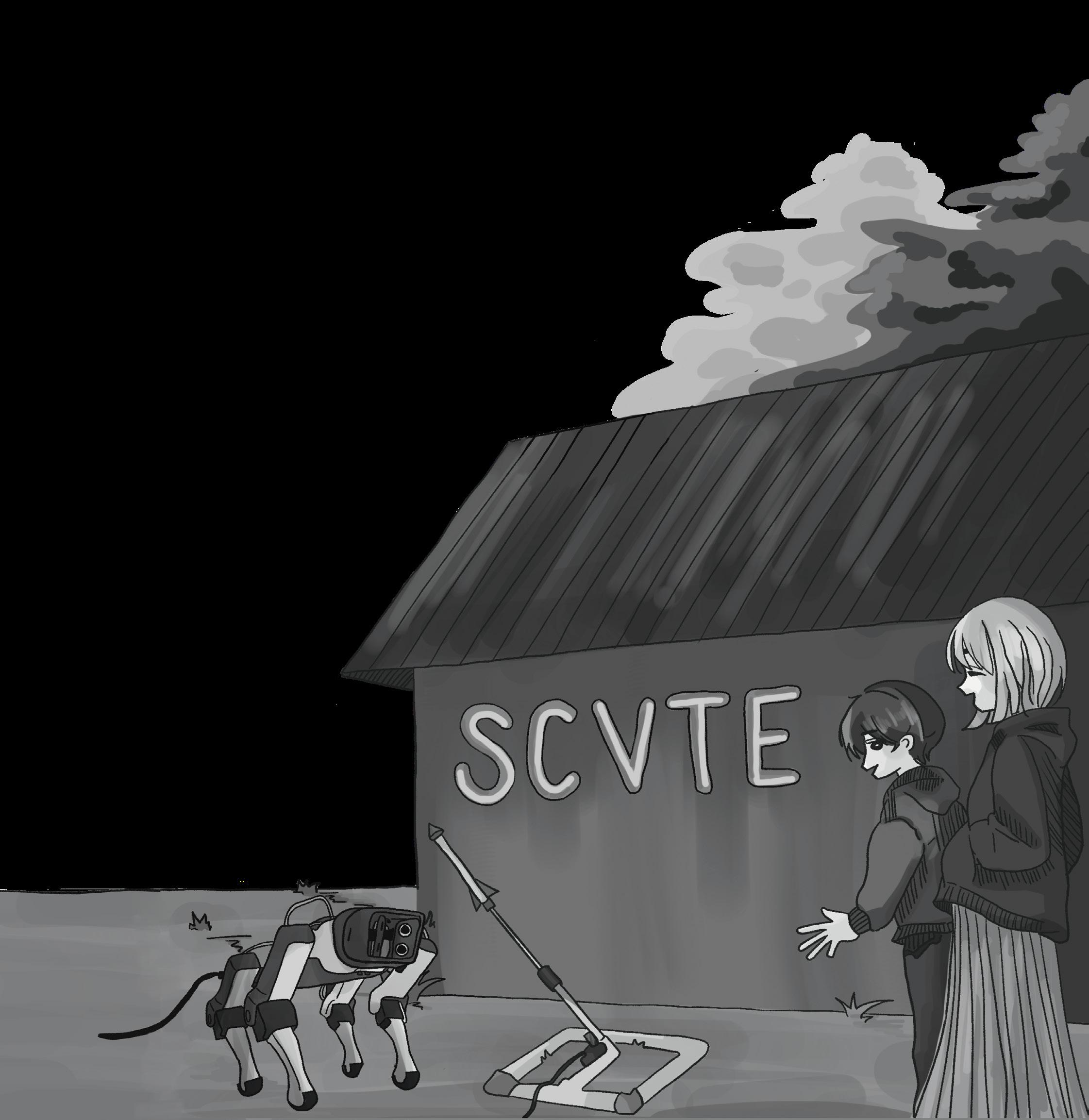

SJCC and SVCTE pave new opportunities for students
Aiming to challenge students and prepare them for a specialized career, Silicon Valley Career Technical Education (SVCTE) and San José City College (SJCC) offer programs that grant students the opportunity to explore their interests through college-level courses that are not provided at their high school.
Dual enrollment, a subset of concurrent enrollment, allows high schoolers to attend challenging classes while simultaneously following the traditional high school calendar. Comparable to Advanced Placement (AP) courses created by College Board, dual enrollment contains college level curricula, enabling students to obtain a headstart in their higher education. Students who take either concurrent courses or AP classes are eligible to earn college credit.
SJCC presents high school students with up to 11 units of curriculum per semester and six units each summer. Partnering with the school, the community college offers students alternative language options such as Japanese and American Sign Language (ASL) as other courses operated through Zoom—so that they do not interfere with required classes at school. Two times a week and spanning and thirty
course will not have their first two periods at their normal high school. Since these classes are held in-person, asking questions during class and clearing up misunderstandings regarding that day’s lesson is more convenient.

“SVCTE not only fosters a classroom environment, but also that of a workplace. We are assessed based on career readiness along with academic and technical skills,” Junior Alana Shin said.
Participants who are interested in attending dual enrollment programs need to complete an application and gain approval from the school counselor. Depending on the program, the application process may differ. For example, when applying for the SJCC General Psychology course, students and their parents must sign two R-40 forms along with their counselor and Principal Peter Park
Sophomore Stephanie Lu the opportunity to learn ASL from an SJCC professor last year. Inspired by content creators who utilized ASL to translate lyrics of a song, Lu wanted to undertake the experience. Accompanied by a textbook and a provided compact disc, Lu took the class via Zoom on Mondays and Wednesdays after school. Although minimal homework was assigned, Lu was expected to apply knowledge learned in
grade. Kancherlapalli believes that taking this class will help him with handling the workload of college courses in the near future.
Shin decided to take a medical assisting class at SVCTE to pursue her career as a nurse practitioner. She explained the enjoyable atmosphere the class brings as it takes on a different perspective on learning.
Aside from completing assignments and papers like ones at the school, the class offers hands-on work that can be applied to real-life situations. Every day, Shin and her class practice taking vital signs and take turns acting as patients and medical assistants to familiarize themselves with real-life protocol. More increased specialized tasks are taught as well, including conducting eye assessments. With hundreds of career options to choose from, dual enrollment courses like SVCTE and SJCC allow students to pinpoint a career path of their interest and begin their pursuit of it. The classes give students insight into real-life responsiblities of certain occupations, providing them with experience and the chance to see whether or not they enjoy certain areas
Plants: An unlikely feline foe
previous material before introducing new concepts during each session. Psychology and sociology are also offered through the dual enrollment program in place of first period. In SJCC courses, students can communicate with the teacher, complete assignments and take tests through Canvas. After the course is over, students must request a transcript on the website to be sent back to the school for approval.
technology, engineering, arts and mathematics program with over 20 courses. Unlike at SJCC, students who enroll in SVCTE take classes on-site at the SVCTE campus. Starting at 7:30 a.m. and ending at 10:30 a.m. on a Monday to Friday schedule, students who choose to participate in a SVCTE
Staff Writer

Robin Jankowski, English Department, is an avid cat lover goes to great lengths to make sure her pets are safe and cared for. Most pet owners concern themselves with the best brands of food and choosing the right vet when it comes to providing a good life for their animals. However, a much overlooked danger to pets is houseplants, including common plants such as poinsettias, oleanders, aloe and many others.
While many poisonous plants will only harm a pet if eaten, some such as English ivy and pencil cacti excrete sap that can irritate the skin of both humans and animals. These plants pose a threat to pets through presence alone. However, Jankowski is careful to only keep plants that will not poison her cats.
As someone who enjoys filling her home with plants almost as much as owning cats, Jankowski has to balance decorating her home and keeping her cats safe. She first started growing plants around the same time that she adopted her first cat: 20 years ago Therefore, finding nontoxic plants was a priority from the beginning. Jankowski’s cat Tristan Tzara was adopted with her brother Thelonious Monk in 2010 and is especially determined when it comes to eating plants.
“Tzara likes to chew my plants a lot. She jumps and climbs to reach even the ones that are hanging out of reach. She’s a wily creature,” Jankowski said.
Jankowski introduces new plants to her home monthly, sourcing them from places such as hardware stores and nurseries. After picking out a plant she thinks would suit her home, Jankowski researches it online to make sure it will not harm her cats. Only then does she find a spot to place it.

“Making sure my cats are safe and healthy is at the top of my list. They are living creatures and I want to take responsibility for their wellbeing,” Jankowski said.
In her home, Jankowski has created a nook for her plants; which includes bleeding hearts and peperomia. She is fond of these plants, as they are easy to take care of and not toxic to cats. The nook’s placement exposes it to lots of sunlight, which allows the plants to thrive.
Jankowski loves to show her happy and healthy cats to her students—photos of the pair have claimed a spot in her introductory presentation and cat motifs adorn the walls of her classroom. Her phone gallery is also full of pictures of Tristan Tzara, Thelonious Monk and the decorative houseplants that have been carefully selected for their safety.
School News & Science & Tech Editor
Sophia Qin
Gwen Carroll
11 THE CHARGER ACCOUNT
DESIGN BY BERTINA FAN
LYNKANGART
Space tourism at T-minus one
Social problems fuel South Korea’s crowd crush
Ella Polak
Kyan Wang
Staff Writer
Every child dreams of becoming an astronaut, blasting off into unknown corners of the galaxy. Soon, these wishes may touch down into the real world as space tourism, spearheaded by private companies, rapidly grows.
While the developing space tourism industry remains prohibitively expensive—Blue Origin’s ticket prices range in the millions for a brief ten-minute trip to low Earth orbit—The New York Times states that reservations for trips are skyrocketing. For instance, spaceflight company Virgin Galactic promises to take customers to space for $455,000 by 2023, and hundreds have already booked tickets.
For now, only the ultrawealthy have taken commercial rockets. Billionaire and Blue Origin founder Jeff Bezos launched into space in July 2021 in the first crewed mission of his company’s spacecraft. Although the mission was the first commercially crewed launch since Russia’s last Soyuz mission in 2009, the amount of money that has been sunk into Blue Origin is colossal. According to Fortune, Bezos has funneled $5.5 billion into Blue Origin, yet the company’s earnings have been trivial; tickets are in high demand, but achieving profitable growth is years away. However, despite the company’s slow start— just six space flights launched— its contributions to the growing industry cannot be understated.
Progress toward relatively affordable space tourism will likely be driven by the affluent elite in their never-ending quests for glory. Nowhere is this more apparent than with the infamously contentious and rich Elon Musk. In pursuit of his dream to die on Mars, he has built SpaceX, the largest private spaceflight company in the world. So far, the company has merely dabbled in space tourism, sending two commercial missions aboard its Crew Dragon spacecraft. Per CNBC, the company is planning its third space tourism mission to take passengers to the moon. However, planetary tourism still remains an uncharted frontier.

NASA’s recent Artemis I launch—the first in the Artemis program that aims to bring humans back to the Moon and establish a permanent base there—signals humanity’s continued baby steps towards lunar colonization, a major turning point in human history. Someday, we may see regular space flights departing from Earth for both lunar tourism and settlement.
Humanity is closer than ever yet still just as far from achieving affordable space tourism. We may have been born too early to explore the stars, but I’ll settle for the solar system.
The night began with strobing lights from clubs filling the streets, laughter emanating from bars and music pulsing rhythmically. It ended with blaring ambulances, sobs of horror and police sirens echoing in the alleyways of the Itaewon district in Seoul, South Korea. A day of enjoyment on Halloween turned into one of grief with over 150 people killed in a deadly crowd crush.
For years, Halloween has been festively celebrated in the trendy neighborhood Itaewon, famous for its nightlife and international diversity. Despite not being a classic Korean holiday, Halloween has become popular among young people for its creative costumes and parties. Blocked from attending large gatherings for two years due to the pandemic, many of South Korea’s youth capitalized on easing restrictions. Over 130,000 passengers poured through Itaewon’s subway station for this year’s festivities, compared to 96,000 in 2019.
“My aunt was at the Itaewon Halloween celebration. It became so crowded that she had to take shelter in a storage locker near where people were crushed. South Korea is usually safe, but certain events can be very busy, so the government should regulate traffic and crowds more strictly at these times,” Freshman Woojin Lee said.
One hundred thirty-seven police officers were assigned to the neighborhood that evening to keep an eye out for sexual harassment and drug abuse. As the night dragged on, streets became increasingly packed with more people. A narrow alleyway about 13 feet wide connecting the central subway station to popular nightclubs became a bottleneck for the jumbled crowd. With some pushing toward the clubs from one direction and others moving toward the station to leave, people began falling over and being crushed. By 1:00 a.m., authorities reported at least 59 to be dead.
“The Halloween disaster will raise awareness on the importance of police regulation during big events. Itaewon will struggle to return to its nightlife for years due to the shock that this event has caused,” Junior Judy Sohn said.
When news of the disaster broke in the early morning, thousands rushed to hospitals and community centers to learn their loved ones’ fates. A makeshift memorial formed near the Itaewon subway station as mourners expressed their grief with
handwritten notes, flowers and food offerings. After the initial shock, public focus shifted to the government; many criticized President Yoon Suk Yeol’s administration and insisted accountability for the lack of foresight. A week after the incident, thousands of protestors gathered outside Seoul City Hall calling for Yoon’s resignation. However, no government agency has since assumed the blame for poor security measures.
“While the government is partially responsible for substandard crowd control, it still would have been difficult to control such a large event with regulations in place. People should focus on solving future issues rather than assigning blame,” Freshman Rachel Chen said.
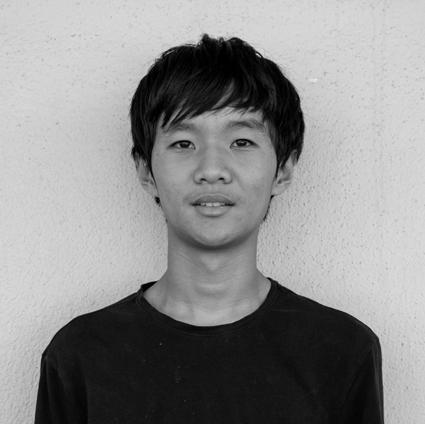
Prior to the crowd crush, inflexible pandemic restrictions exacerbated frustration among the country’s youth. A limit on gatherings of over ten people instituted at the start of the pandemic was just repealed in April. The pandemic also caused record unemployment rates for those under 30, per The Korea Herald, and a “burnout culture” that promotes work over happiness looms over workers and students alike. The Los Angeles Times argues that such pressures on South Korea’s young adults pushes them to seek risky distractions like Itaewon’s parties.
BBC reports that many Korean millennials consider themselves to be the “sampo” or “three-sacrifice” generation, meaning they give up relationships, children and marriages in order to survive economically. As more goals such as homeownership and social life pile onto the list, young Koreans are becoming part of the “n-po” generation, with “n” representing the countless sacrifices they must continue to make.
Staff Writer
Five ways to stay safe in a tight crowd
1. During a crowd crush, do not bend down to pick up dropped belongings. Most people who die in a crowd crush cannot get back up from the floor and are trampled on.
2. When trying to alert or contact someone in a huge crowd, never yell. In most cases, yelling is only futile and only wastes oxygen. Additionally, people should try to get their heads up as high as possible in order to take in fresh air and avoid suffocation.
3. If stuck in a tight crowd, never try to resist the flow of the mob. Resisting is ineffective, wastes energy and can be dangerous if the crowd is massive. Prioritize getting to safety over reaching a specific place.
4. If one falls down, they should curl up into a ball on their side to protect their vital organs. They should also cover their head with their arms to protect it from being trampled. Do not lie on the back or front, as it increases the likelihood of organ damage and suffocation from being crushed.
Without proper safety measures at crowd-attracting events, these joyful celebrations can become dangerous. Just as the 2014 Sewol Ferry sinking that claimed the lives of 250 students led to an overhaul of safety procedures for port authorities, many hope there will be a broad government response to the crowd crush. However, addressing the root problem—societal dissatisfaction among South Korea’s youth—may be a more effective response in the long term.
5. Stand like a boxer with arms in front of the chest and feet spread apart. This keeps a bubble of space between oneself and others and ensures a steady footing.

FEATURE: WORLD 12 DECEMBER 15, 2022 DESIGN BY INSEO KIM
Compiled by Ella Polak, Staff Writer
KAYLA CHOI ART
as valid passports and permanent residency cards, are still accepted.
“I own a passport; although I do not have a Real ID, it is a good idea to have more security measures and precautions at airports to prevent crime,” Senior Jessica Liu said.



The California Architects Board states that on Jan. 22, 2018, the California Department of Motor
and have been relatively secure,” Junior Sucheer Maddury said.
Vehicles (DMV) began issuing federally compliant Real ID driver’s licenses or ID cards to the public for the first time. The process of acquiring a Real ID is listed on the DMV’s official website. First, individuals must apply for a Real ID on the DMV website and provide documents for proof of identity, including first name, last name and date of birth. Next, applicants must visit a DMV office and provide their Social Security number and confirm the approved identity document. After paying the application fee, applicants’ thumbprints will be scanned and their photo will be taken. Real IDs will be mailed roughly three to four weeks after an appointment.
The U.S. Department of Homeland Security created Real ID to prevent the use of
Some individuals oppose Real IDs because they threaten undocumented immigrants aiming to legally obtain a driver’s license. Anaya Robinson, a senior policy strategist for the American Civil Liberties Union (ACLU) of Colorado, claims that because the Department of Homeland Security (DHS) and Immigration and Customs Enforcement can easily access the information, Real ID sparks critical privacy concerns. Furthermore, Real IDs develop strict security standards for state-issued driver’s licenses and forbid federal agencies from accepting driver’s licenses and ID cards from states that have not reached these minimum standards. The DHS affirms that if individuals fail to meet the Real ID Act requirements, they will be denied access to nuclear power plants, federal facilities and aircrafts, which may cause additional complications in their ability to go to work or travel for family emergencies.
“The government should look into other ways aside from Real ID to stop the use of fraudulent IDs. Real ID heavily disrupts daily life, restricting people who just want to obtain licenses and board airplanes legally,” Sophomore has a passport, so





Real ID standards by May 2025. Many may find the process to be frustrating, as getting a passport may take up to six weeks and leaving out any information will get an application denied,
passport has an extremely strong ranking, permitting easy entry into 187 destinations around the world. The most valuable passport in the world is Japan’s, granting relatively free access to 193 destinations.
Ultimately, the process of obtaining passports and Real IDs may seem inconvenient, but these documents are among the most accessible forms of valid identification. Real IDs specifically deny fraudulent driver’s licenses to protect U.S. air travel, meant to make flying safer for everyone. However, there may be flaws in their implementation, raising the
Opinions Editor

When it comes to curating pleasant atmospheres indoors, nothing beats growing houseplants—from lush aglaonema to fuchsia-pink dahlias. However, it can be difficult to take good care of plants. With over five million users across iOS and Google Play, Planta is a toprated plant care app designed to assist in maintaining happy and
Upon opening the app, prospective plant parents select their interest and skill level in plant care, from low or hopeless to high or master. Since different plant species demand different levels of commitment, the app recommends specific plants based on the individual’s choices.
Then, Planta directs its users to add their own existing plants. Hundreds of choices appear in a list on the screen and pressing one reveals another series of selections: location, average amount of light received, distance from a window, repotting status and pot material. An optional final step is giving the plant a name; I named the lowmaintenance Echeveria succulent sitting in my kitchen Steve.
Planta’s main utility is its smart care reminders. Depending on the type of plant and its location, the app sends reminders at set time intervals to complete specific tasks, such as watering and misting. I receive a watering notification every 32 days for Steve.
Although the app is completely free to download, access to its advanced features requires an upgrade to Planta Premium. One such feature it unlocks is Dr. Planta—a virtual “plant doctor” that diagnoses and recommends treatments for sick plants based on a scan of the plant.
Planta’s user interface is aesthetically pleasing and easy to navigate; its earthy green tones perfectly match the plants. Plant enthusiasts can further customize their platform by uploading photos, keeping a record of each plant growth over time.
I have used Planta for about a month and my plants are thriving. I found its watering prompts extremely helpful; they have eliminated the pressure I place on myself to remember when each plant needs to be watered. From its practical reminders to its beautiful design, Planta is a musttry for experienced and aspiring houseplant owners.
Planta
FEATURE: WORLD 13 Planta (4/5) + helpful plant care reminders + good for organization - limited access to features how app-ealing was it?
identification,
passports
residency cards,
“Yet,
it is still possible to travel without Real ID, as many other forms of
such as valid
and permanent
are still valid.”
“Some individuals oppose Real IDs because they threaten undocumented immigrants aiming to legally obtain a driver’s license.”
JUDE TANTAWYART
Successful seasons: The school scores at CCS
Diya Boyapati

After a highly accomplished season, several teams qualified for the Central Coast Section (CCS) games, a competition for high school teams ranked in the top eight of their division. Competing for positions in the CCS tournament with more than a hundred other schools in California, the school athletes worked hard during their season—with the cross country, girls’ golf and tennis and the girls’ and boys’ water polo teams all making it to CCS finals.
The cross country team sent two groups of players to CCS. The boys and girls were separated into their respective divisions, with boys placing 10th and girls winning second in the Blossom Valley Athletic League (BVAL), which consists of 26 high schools across five school districts in Santa Clara County. Since the girls’ team placed 10th in 2021, their qualification was especially celebrated. Additionally, their second place award secured
at Quicksilver or Guadalupe Oak Grove Park grants us the endurance needed to achieve our goals,” Maria Forster ‘23 said.
Forster describes how aside from hard work, cross country coach Rudy Montenegro was also vital to their state qualification. According to Forster, Montenegro dedicates countless hours to the team’s training.
“When the season started, my goal was for our varsity girls team to win two league meets so we would have a better record than last year. At the BVAL finals, the team showed me that they could improve from last year, pulling a surprising second place finish out of the 26 teams. I attribute this victory to our team lineup at the CCS finals,” Montenegro said.

Other than the cross country team, the tennis team also had a successful season. With their new coach Jonathan Hunter, Physical Education Department, the girls’


Lu is not the only one with a positive tennis experience. Hunter illustrates how he enjoys coaching the girls’ tennis team because the players are willing to work hard and always play eagerly. their constant willingness to improve their skills, I never doubted we would make it to CCS. With all our successes, we also had our challenges. Due to unforeseen circumstances, some girls could not make it to all the matches. Thankfully, the girls pulled it together and persevered, ending up winning eight out of the 10 matches,” Hunter said.
Other CCS qualifying teams
Sher ‘23 describes how the team lost key coaches and players to transfers and moves, but the younger players were able to step up for

“We all turned into students of the game, approaching this sport from a very analytical and strategic angle that allowed us to beat teams that were bigger than us—our size and bench were not our strong suits,” Sher said.
The school’s fifth team to compete in CCS, the girls’ golf team, completed their season on Nov. 5 and finished ninth in CCS. In addition, Celine Ho ‘23 placed
SPORTS DECEMBER 15, 2022 14
Media Staff
DESIGN BY BREANNA LU
Left: Max Buran ‘25 takes a shot at the goal. Right: The girls’ tennis team huddles for a group photo at their match. Bottom (From left to right): Celine Ho ‘23, Maria Forster ‘23, Sanjana Subramanyan ‘23 and Michael Sher ‘23 pose for a group photo.
Courtesy of Girls’ Varsity Tennis
Courtesy of Laura Burns
WILLIAM HUANG PHOTO
ELLIE KIM ART
TIANSHU YANG ART
By Milli


“The Poet”
Anthologising Life and Death, The poet needs no rest. She needn’t food, nor drink, nor breath; For she’s time’s darling-guest.

Of worldly comforts’ warmth and ease The poet seldom thinks, But in her evenings, unreserved, Love’s essence-blood she drinks.
The pen weighs heavy in her hand, An anchor to this world, As she drifts off to far’way land Where Truth and Lie unfurl.



She gazes upon all who walk Upon Earth’s mortal crust, She hears each word of those who talk, Each feeling, love, and lust.
She stands the empress of all things, From Sun to Soil below; And when her quiet verse she sings, The words and stanzas flow
STUDENT SPOTLIGHT Do you want your creative work featured in TheChargerAccount? Email lelandchargeraccount@gmail.com for more information! THE CHARGER ACCOUNT 15 Visit thechargeraccount.com to learn more about the student submissions.
DESIGN BY REAGAN LIU
Photo by Anonymous
Photo by Mariam Jiva
Lincoln Park, San Fransisco Mosques of Turkey
Photo by Rachel Jirman IG: @incorrectdog_
County fair in Iowa
Art by Alexander Guan Art by Anonymous
Art by Arohi Dave
- Connecting through Communication -

Stories to histories: Preserving Indigenous languages
 Antara Gangwal
Antara Gangwal
Language is a fundamental part of culture. Written, spoken and gestural language are critical to preserving the stories of a people, transforming them into histories that will live on forever. When languages are lost, these histories are lost as well. This is true of many American Indigenous languages, which are at risk of disappearing without language conservation efforts.
Historically, about 500 Indigenous languages classified into around 60 language families— similar dialects that originate from a common language—spanned North America, per The National Museum of the American Indian. Many of these languages contain unique grammatical structures; for example, according to the language learning site Berlitz, languages in the Algonquian family do not require nouns to form complete sentences. Many also exhibit polysynthesis— the expression of complex ideas as single, long words with a root verb and attached prefixes that indicate subject and object.
The umbrella term “North American Indigenous languages” includes Hand Talk, a group of sign languages used by both deaf and hearing Indigenous people. As Vox states, Hand Talk was used by many tribes to tell stories and perform ceremonial rituals. A prominent example of Hand Talk is Plains Indian Sign Language (PISL), formed from 4,000 basic signs representing words and ideas rather than letters—like in American Sign Language (ASL). For instance, there is a single sign, flipping a flat palm side to side in front of the chest, that encompasses all interrogative words. In the past, PISL was integral to communication between tribes that spoke different languages as it was a standard system understood by native groups across the Great Plains.
However, the National Congress of American Indians declared Native American languages to be in a state of emergency in 2010; World Atlas reports that less than 170 remain today. Additionally, only a few dozen individuals are fluent in PISL, according to Vox. These languages were lost to forced assimilation of Indigenous people into white American society and culture.
Oral storytelling is how many Indigenous people preserve their traditions and legends, as Great Falls Tribune Panelist Rylee Mitchell states. Many tribes possess unique oral storytelling traditions, such as throat singing—a form of music from the Inuit tribe. As Inuk throat singer Shina Novalinga describes on BBC News, throat singers, often women, perform facing one another in pairs. They draw deep, guttural sounds from their diaphragm, belly and throat, with one initiating a rhythm and the other following. According to The New Yorker, throat singing originated as a lighthearted competition among Inuit women who sought to imitate the sounds of nature. Yet for those like Novalinga and Tanya Tagao—a Canadian Inuk who creates throat singing albums—the performance is simultaneously an art form and way to embrace tradition, after it was deemed satanic and suppressed by Christian missionaries in the 1900s. Novalinga and Tagao recognize the importance of preserving the tradition; it expresses a distinctive soundscape that cannot be translated into other means of communication.
Similarly, while Vox explains that Hand Talk influenced the formation of ASL, PISL does not perfectly translate into ASL. As a language developed by white Americans, ASL reflects Eurocentric ideas about gender and culture; the sign for “boy” is the tipping of a top hat, and the sign for “girl” mimics the action of tying sun bonnet strings. Additionally, the names of native tribes need to be spelled out phonetically in ASL while in Hand Talk, a single sign represents each tribe.

“Communication through a specific language carries connotations and nuances that are lost when translated; similar concepts can signify extremely different ideas in different cultures,” Andrea Dashe, Foreign Language and Social Studies Departments, said.

Governments are taking action to sustain these languages. The Native American Languages Act was passed in 1990, permitting schools to teach Indigenous children in their own languages. This, paired with grants from the federal government, encourages the creation of curriculum centered around Indigenous languages in schools. The California School Boards Association reports that this year, the Yurok Tribe received a grant of $350,000 from the U.S. Office of Indian Education to develop its Growing Learners and Sustaining Yurok Language program. Using this, the tribe will further expand its Native American language programs in four high schools in northern California. In 2019, Yurok classes developed from these programs at Eureka High School enabled two students to be the first to receive the California Seal of Biliteracy in Yurok.
“In my Ethnic Studies class, we learned about Indigenous peoples’ histories in North America and how their culture and languages are disappearing. Students must learn about these languages and advocate for government action to preserve them, which can be accomplished through protests and petitions,” Freshman Sophia Wu said.
Indigenous Language Institute predicts that only 20 Native American languages will remain by 2050, but this loss can be combated by teaching these languages, especially to younger generations. By preserving Indigenous languages, communities can help ensure that the histories they carry will endure as well.
Infographic:
Prior to colonization, there were over 300 spoken Indigenous languages in the U.S. with about 1.5 million fluent speakers.

American Indian Education awards scholarships to over 200 Indigenous students each year.

Over50%ofsurviving Indigenouslanguages have less than 1,000speakers.




Compiled by Andrew Duval and Jay Li, Staff Writers

In 2018, only 47 United States language protection projects received funding—just 29% of all requests.
speakers left in the
U.S., most of whom areolderthan60.Thereare about2,000Cherokee
Of the 115 Indigenous languages spoken in the U.S. today, two are healthy, 34 are in danger and 79 are predicted to go extinct within one generation without intervention.
DESIGN BY ISAAC ANG
The disappearance of North American Indigenous languages
Staff Writer
DANA LIM ART





















































































 Antara Gangwal
Antara Gangwal








